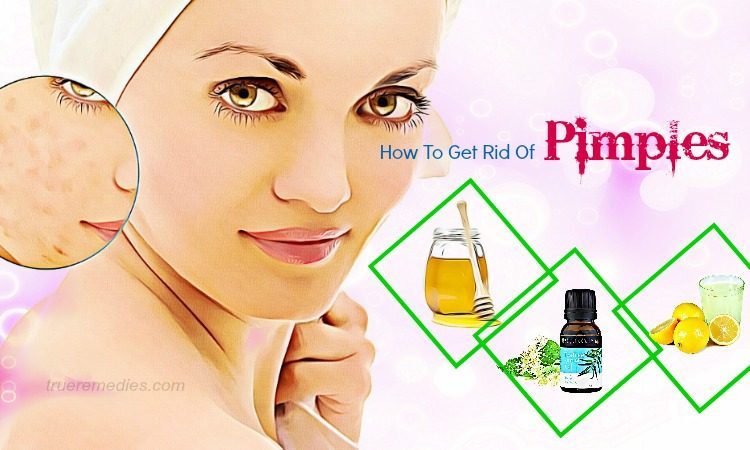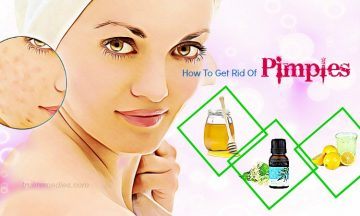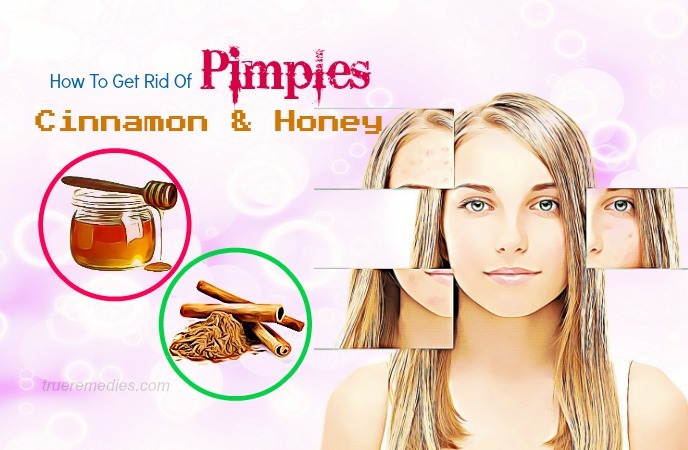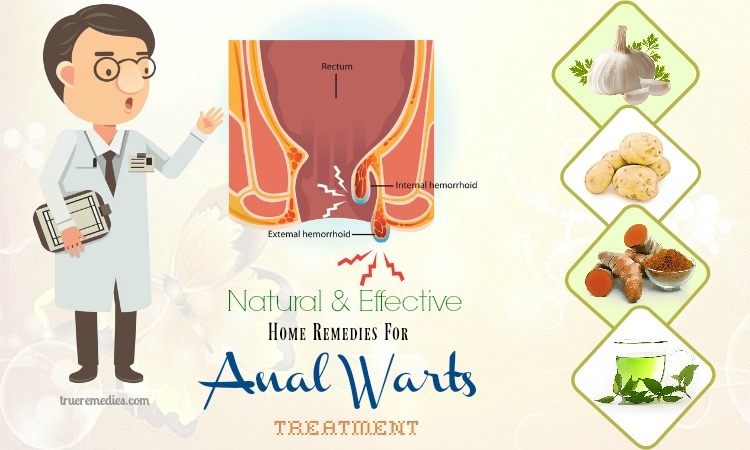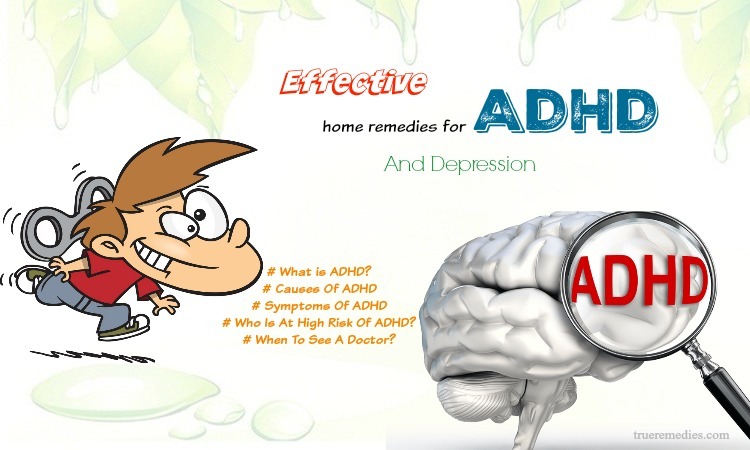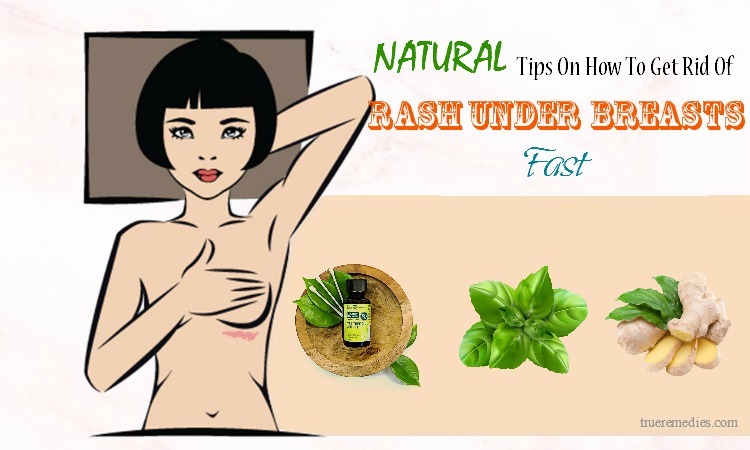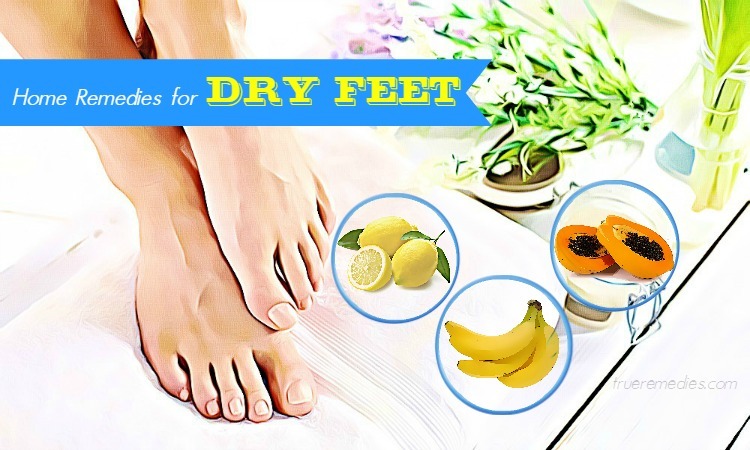updated: 11/21/2019
CONTENTS
When it comes to skin problems, maybe one of the most embarrassing and annoying blemishes that people have to cope with at some point in their life is pimples. This is the most common skin issue in America. Acne, also known as zits, seem to appear everywhere on the body. According to the British Medical Journal, acne impacts over 80% of teenagers and keeps happening in adult life in about 3% of men and 12% of women. The fact that you are reading this article means you want to know more about this condition, mainly how to get rid of pimples, right? Sure, True Remedies will uncover the answer to your question, but first of all, you need to know some basic information about pimples and related problems.
- 17 Natural Home Remedies For Scalp Pimples & Acne Treatment
- 37 Natural Home Remedies For Cystic Acne On Face
- 10 Worst Foods That Cause Acne Breakouts In Adults
What Are Pimples?
In the first place, a pimple is considered a small comedo, papule, or pustule which forms a skin lesion. In technical terms, it is acne vulgaris. Although there are a lot of causes of pimples, regardless of those causes, pimples develop when the sebaceous glands (also called as oil glands) are clogged and infected due to harmful bacteria. It explains why pimples often swell up and turn into pus-filled and red lesions on and under the skin surface[1].
The majority of people have pimples or acne on their face, but the chest, neck, shoulders and upper back are also commonly impacted parts. It is estimated that approximately 30% of teenagers suffer from acne which is reckoned severe. For some people, genetics is the leading cause and out of their control.
When not treated, acne or pimples could lead to scarring, especially when the skin is swollen, flamed, painful, and reddish, such as nodules and cystic acne. This form of acne will penetrate deeply into the human skin, leading to damage. If sufferers delay the treatment, it might result in pimple scars too. Usually, acne is classified in 3 levels, including mild, moderate, and severe level.
TrueRemedies Partner Solutions

Need a Help from the Leading Expert Online, Available 24/7?
They’re all here and ready to answer your questions online or by phone. Keep asking questions until you get the answer you need.
Picking at acne will worsen it as it does not have enough required time of the healing, which increases inflammation; and thus, leading to scars. Besides, delaying the treatment of pimples and acne until it gets severe could cause large scars; therefore, it is best for you to deal with it as soon as possible.
What Are Causes Of Pimples?
To control pimples effectively, it is crucial to know how they form and what causes them. The most important thing about pimples you need to remember is that it is not your fault. In contrast to popular belief, pimples or zits are not caused by external factors like what you eat, how often you cleanse your face or exercise. They are mainly caused by a combination of physiological factors far beneath the surface of the skin, which are beyond human control.
Many factors cause pimples and zits, including:
- How often you remove your dead skin cells
- The sebum amount produced on your skin
- Genetics: This may play a significant role in the development and persistence of zits. So, the history of the family could give you an idea of the appearance of pimples on your skin[2] [3].
Leading causes of pimples are:
- Hormones: For most people with pimples and blemishes, skin problems begin at puberty, when their bodies start to produce hormones called androgens. Such hormones cause the sebaceous glands to enlarge, which is also a natural part of the growth of the human body. The sebaceous glands of people with pimples, nonetheless, are often over-stimulated by the hormones androgens, which sometimes could persist well into adulthood. Also, androgens are responsible for pimple flare-ups during the menstrual cycle and pregnancy for some women.
- Excess sebum: As the sebaceous glands get stimulated by the androgens, it will produce extra oil (sebum). When the sebum gets tightly onto the skin pores, it will mix with some common skin bacteria and dead skin cells. This process is normal, but the presence of extra oil in the follicle will increase the risk of clogging pores, causing pimples.
- Bacteria: Bacteria are available in different skin types. It is a normal part of the natural oil maintenance system of the skin. But, when a follicle is plugged, acne bacteria will multiply quickly; thereby, creating the chemical reaction causing inflammation, both in the follicle and the surrounding skin.
- Follicle fallout: The dead skin cells in the follicles often shed steadily, and they are dislodged on the skin surface. In those with overactive sebaceous glands, those cells will be shed more quickly. When this occurs, dead skin cells mix with excess oil and build a plug in the follicles, which prevents the skin from completing its natural renewing process.
- Inflammation: When the human body gets in contact with some unwanted bacteria, it will send white blood cells to attack those intruders. The process is called an inflammatory response or chemotaxis. This response makes pimples swollen, red, and painful. Also, this process is different for each person.
Other causes of pimples include:
- Digestive problems
- Excess stress
- Certain medications
- Over-exfoliating
- Sensitivity to testosterone[4]
- Bacterial growth[5]
How To Get Rid Of Pimples Overnight Fast – 46 Effective Tips
1. Apple Cider Vinegar
If you have apple cider vinegar in your kitchen, you are having the perfect treatment for pimples. It may kill the microorganisms[6] triggering pimples. It helps balance the pH level of your skin, making it harder for microbes to flourish. Besides, being an astringent, apple cider vinegar is also useful in eliminating excess oil. But, do not overuse it because it might dry out your skin excessively.
Directions:
- After cleansing your face thoroughly, use a towel to dry it
- Mix apple cider vinegar with water at a ratio of 1:3
- Dip a cotton ball into the mixture and apply it over your affected skin areas
- Wait for 10-15 minutes before rinsing it off with water, followed by your skin toner
- Repeat 2-3 times per day
2. Cinnamon And Honey
Cinnamon is spicy, and honey is sticky. However, the combination of these ingredients will help you get rid of acne naturally. The antimicrobial properties of cinnamon[7] may stop bacteria from intruding your skin pores. On the other hand, honey is a natural antibiotic that may speed your healing process. You should use Manuka honey that originates from the Manuka forest in New Zealand because it has incredible pain relieving and healing properties.
Directions:
- Mix 1 teaspoon of cinnamon powder with 2 tablespoons of honey
- Apply this mixture to your clean face and wait for 15 minutes
- Wash it off thoroughly and use a soft towel to pat your skin dry
- Repeat this routine 2 – 3 times per week
3. Ice Cubes
This sounds too simple when it comes to natural treatments for pimples. But, for a pimple having not yet infected fully, ice cubes could help diminish the swelling and stimulate the oil organs to contract and push out abundance oil along with microbes from your disturbed organs. When applied to pimples, ice helps to constrict the blood vessels and reduce inflammation[8].
Directions:
- Take an ice cube and wrap it in a cotton swab, and then place it on your affected skin area for a few seconds
- Leave it there for several minutes and rehash the methodology.
Note: You should apply the ice as many times as you can during the day to get positive results.
4. Toothpaste
Toothpaste may dry out pimples and decrease their healing time. The antibacterial properties of toothpaste play a crucial role in eradicating bacteria causing pimples[9]. Notably, it could be used for pimples both on face and body, such as arms and legs. Toothpaste is suitable for normal, oily, and combination skin types.
Directions:
- Use a cotton swab to apply a layer of toothpaste to your affected areas
- Wash it off after 30 minutes
- Repeat the method 2-3 times per day
Note: You should use white toothpaste, not a gel-based one.
5. Honey Only
Honey is well-known for its disinfecting properties[10], helping demolish the microbes in oil organs quickly. As a result, it helps boost the mending methodology.
Simply use a cotton ball to dab natural honey on your affected areas, and then leave it there for about 20 minutes before rinsing it off with warm water.
6. Tea Tree Oil
Also known as melaleuca, tea tree oil, is considered one of the most recommended home remedies for acne and pimples as it possesses incredible microbial properties that help to fight the bacteria which cause acne. By the study published in the Australian Journal of Dermatology, tea tree oil supplies positive results for those people with mild cases without serious side effects. This study asked the participants to use tea tree oil on their pimples twice per day for about 3 months with the evaluations conducted at 4, 8 and 12 weeks of applying. The result was positive; thereby, tea tree oil is an excellent choice for removing pimples naturally fast[11].
You can mix tea tree oil with coconut oil to have the great combination for treating pimples on nose and chin. Then, apply it to your face and leave it there for 20-30 minutes before rinsing it off with water.
As an alternative, you could also combine aloe vera gel and tea tree oil to create a face mask for pimples.
- Mix 1 tablespoon of aloe vera gel with a few drops of tea tree oil
- Apply this combination to your blemishes and pimples and wait for 20 minutes
- Wash it off with water after that
Warning: Avoid tea tree oil if you have sensitive skin type.
7. Lemon Juice
Many people believe that lemon juice is a miracle treatment for pimples and blemishes. It is true. Lemon juice has acne-fighting qualities, and it is very cheap to clear your skin naturally[12]. Using lemon juice may kill bacteria thanks to the citric acid content which acts as an antiseptic, reduce oil and redness due to the mild astringent qualities, and fade scars caused by acne due to the natural acid in lemon juice. It also helps to eliminate skin hyperpigmentation while lightening skin. While there are some potential benefits of using lemon juice for pimples, there still are some side effects if you overuse lemon juice. If you have dry skin, then this ingredient will cause excessively dry and flakey skin. It is also not suitable for dark skin because it could cause dark spots where applied. But, after all, lemon juice is still worth a try for pimple removal.
Method 1: Lemon juice only
- After cleansing your skin with water and topical cleanser, you cut a fresh lemon in half
- Squeeze its juice in a bowl and use a cotton ball to dip into the solution
- Apply it to your affected skin
- Rinse it off with cold water after 10-15 minutes and repeat this routine twice per day
At first, you might feel stinging or discomfort, but it will disappear soon.
Method 2: Lemon juice and rose water
Rose water has antibacterial qualities and acts as a skin toner that may reduce acid in lemon juice.
- Cleanse your skin with water and topical cleanser
- Gently scrub your skin with a washcloth
- Use a clean, soft towel to dry the skin
- Mix lemon juice and rose water with a ratio of 1:1
- Apply the mixture to your impacted skin areas
- Wait for 15-20 minutes before washing it with cold water
- Use a dry towel to dry it out
- Repeat this routine twice per day for good results
Warning:
- Avoid letting lemon juice contact with your eyes.
- Avoid sun exposure or wear sunscreen when using lemon juice
- Test lemon juice on a small skin area first to prevent any reaction.
8. Tomato
Being known for antioxidant properties, tomatoes are also rich in vitamin A, C and K. These properties may dry out the pimples. Besides, tomatoes may close pores, thereby preventing dirt, bacteria, oil, and dead skin cells from clogging them. The natural acid in this plant may restore the natural oil balance of the skin. With high water content, tomatoes help moisturize the skin, thereby leaving it smooth and soft. Not only that, tomatoes have some crucial minerals such as potassium and iron and other nutrients that support the overall health and skin and reduce the formation of scars[13]. Even, tomatoes help prevent premature wrinkles and fine lines.
Method 1: Tomato mask
- Grind tomato and use it as a facial mask.
- Leave the mask on your skin for 15 minutes and rinse it off with fresh water after that
- Wash your face with a mild cleanser, and then pat it dry
- Repeat this process daily
You can also use tomatoes by taking one medium-sized tomato and slice it. Then, put a slice right directly on your affected areas.
Method 2: Tomato, lemon juice, and oatmeal
Oatmeal helps exfoliate the skin to eliminate toxins causing acne while lemon juice kills off bacteria causing breakouts.
- Place ½ cup of plain oatmeal in a blender and add 1 tablespoon of lemon juice and 1 tomato to it
- Blend these ingredients to get a smooth mixture. Add water if the paste is too thick.
- Apply the paste to your clean the skin and wait for 20 minutes
- Rinse it off with warm water and pat it dry
- Repeat this routine every day
Note: If you want to treat pimples on back, then add mint to the solution to reduce inflammation.
Method 3: Tomato, tea tree oil, and jojoba oil
- Mash ½ tomato until smooth
- Mix tomato with 5 drops of tea tree oil and 1 teaspoon of jojoba oil
- Apply the mixture to your skin and wait for 15 minutes
- Rinse off with warm water daily
- Repeat this every day
Method 4: Tomato and avocado
- Take a pot of water and boil up
- Remove the water from the heat
- After washing your face, drape a large towel over your head, and lean your body over that to steam for 15 minutes or more
- Put the pulp of an avocado and 1 tomato in a blender and mix it till smooth
- Apply the paste to your skin and wait for 30 minutes to rinse off
- Repeat this routine every day
Method 5: Tomato and yogurt
- After pureeing ½ tomato, mix it with 2 tablespoons of plain Greek yogurt
- Use your fingertips to apply to your skin
- Gently massage in circular motions
- Wait for 30 minutes and rinse it off with warm water
- After washing your face with a topical cleanser, pat it dry
- Repeat this process every day
Method 6: Tomato, camphor, and honey
- Mix tomato juice, raw honey, and camphor lotion at the ratio of 1:1:1/2
- Blend them in a blender to get a smooth paste
- Apply it to your skin and wait for 15 minutes
- Wash it off with lukewarm water, followed by cold water to close the pores
- Repeat every day
Method 7: Tomato and garlic
- Take 4 garlic cloves to peel and mince it
- Mix it with 2 tablespoons of tomato juice and blend it to have a smooth paste
- Apply it to your clean skin and wait for 5 minutes to wash it off with water
- Apply your oil-free moisturizer after that and repeat daily
9. Steam
This method is potent for your skin, especially when you suffer from pimples and blemishes[14]. The steam helps open your skin pores and let your skin breathe. Also, this aids in removing dirt, oil, and bacteria trapped in the skin pores, all of which cause inflammation and infection.
- Take a large container with the hot water
- Prepare a large towel to cover your head and lean your body towards the tank
- Do it for a few minutes and wash it off with lukewarm water
- After drying, you apply your oil-free moisturizer
10. Garlic
For many centuries, garlic has been a great traditional fold treatment which is claimed to have potent antiviral, antiseptic and antifungal properties[15]. It is also used to reduce the severity of pimples and acne. Garlic is said to have the most powerful antioxidant out of any other natural food, even more over papayas and oranges. This ingredient is most potent if consumed raw. You can crush the garlic cloves and add them to your recipes. Eating raw garlic every day may purify your blood. Do not overeat because it might cause an upset stomach. Or, if you can’t stand its smell, soak peeled garlic cloves in milk for about one hour. In Ayurvedic medicine, garlic is reckoned effective for eliminating acne scars and drying out acne if used topically.
Directions:
- Crush a garlic clove into a paste
- Then, dilute it with ½ cup of warm water
- Apply the mixture to your face using a cotton ball
- Wash it off with a mild cleanser after that
Because the mixture is diluted, it will not irritate your skin. However, if you still experience skin irritation, stop using it.
11. Baking Soda
Another efficient home remedy for pimples is baking soda. It is used to remove dirt, excess oil, and dead skin cells. Baking soda has anti-inflammatory qualities, helping soothe redness and swelling associated with pimples[16]. Also, it calms down the flare-ups and soothes skin rashes and sunburn. Using baking soda also aids in fading pigmentation and acne scars. Also, because baking soda is alkaline, it may neutralize the pH levels of your skin.
The idea of using baking soda for pimples and acne get a lot of mixed reactions because the result depends on each skin type. For the most part, baking soda is not harmful when used on the skin. But, it is better to do a small patch test before using it on a large skin area.
Method 1:
- Mix 2 tablespoons each of water and baking soda
- After washing your face and patting it dry, use the paste on your affected skin areas
- Wait for 15 minutes or more before rinsing it off with lukewarm water
- Apply your non-comedogenic moisturizer afterward
- Do this twice or thrice per week
Method 2: Baking soda and lemon juice
Lemon juice, as mentioned earlier in this list of tips on how to get rid of pimples, may take control of your oil production and shrink the pores. Also, it reduces redness and kills off bacteria causing acne.
- Mix baking soda, water, and lemon juice at the ratio of 2:2:1
- Apply the mixture to your clean and dry face
- Wait for 15 minutes and rinse it off
- Apply your moisturizer afterward
Method 3: Baking soda and coconut oil
Coconut oil may dissolve excess oil on your skin while baking soda eradicates them. All of these actions will support your acne fighting process[17].
- Mix a little bit facial cleanser with coconut oil and baking soda
- After rinsing your facial skin with water, use this combination to massage your skin
- Wash your skin with tepid water after that
- Pat it dry
- Apply a moisturizer
- Repeat this routine 2-3 times per week
In addition to the methods introduced above, there are some other ingredients you can use to mix with baking soda for acne removal, such as apple cider vinegar, olive oil, aspirin, oatmeal, milk, etc.
12. Papaya
Being the fruit with a lot of powerful properties, such as antioxidant and anti-inflammatory properties[18], papaya should not be skipped when it comes to effective remedies for pimples naturally. It is a good source of vitamin A and enzymes which may decrease inflammation and make your skin smooth and soft.
- Crush a few papaya pieces to get its juice
- Apply it to your affected skin
- Wait for 15 minutes and rinse it off
Or, you can also make an exfoliating face mask by mixing crushed papaya with some honey. Apply the mask to your skin and wash it off after it dries out completely.
13. Cucumber
Not only is cucumber rich in vitamin A, C and E, and potassium, but it also possesses soothing and cooling effects. Therefore, it is very effective in reducing the redness caused due to pimples and rejuvenating the skin[19].
Directions:
- Cut 1-2 fresh cucumber into pieces
- Soak them in water for 1 hour or more to transfer the nutrients into the water
- Strain that water and drink or use it to wash your face
Or, you can also grind a cucumber and apply the paste to your face. Rinse it off with warm water after 15 minutes to help eliminate acne-causing bacteria and dirt out of your skin pores.
14. Mint
Mint is an excellent solution for removing oil that clogs the skin pores. Mint has salicylic acid, and this herb has been commonly used in Ayurvedic formulations to get rid of ace, pimples, and other issues[10].
Just simply mix 2 tablespoons of the finely chopped fresh mint with the same amount each of oatmeal and plain yogurt. Apply the paste to your skin and wait for 10 minutes before washing it off with water.
15. Echinacea
This plant is traditionally used to help speed up the wound healing process. Also, it is useful in preventing flu and colds. However, its anti-inflammatory and antibacterial qualities could also be resorted to fighting acne[21]. You can use echinacea tea every day as a face wash (add some tincture to it if you like) to help treat your pimples.
16. Aspirin
Aspirin has salicylic acid that is good for treating acne and pimples. Also, aspirin is now proven to be useful in dermatology[22]. Using aspirin helps to dry out your pimples and blemishes and decrease inflammation.
To make use of it, you can mix 4 pills of aspirin and 2 tablespoons of water to make a paste. Then, apply the paste to your infected skin and wash it off after 15-20 minutes.
17. Chamomile
With the tea made from chamomile, you could do a lot for your pimples. Furthermore, every home has chamomile tea, so this becomes a perfect solution for pimple removal. Chamomile is added to skin cosmetics to serve as an emollient. It is famous for anti-inflammatory, soothing, moisturizing and calming effects[23]. With the chamomile tea, you will almost experience no side effects. Even, it could be used effectively as a scrub for your body, an herbal mask for eyes, and a face mask.
Method 1:
- Fill a large bowl with hot water
- Add 4 chamomile tea bags to it
- Lean your head over your bowl and cover it with a towel
- Do it for 10 minutes or more to let the steam contact with your skin
- Dab your skin dry by using a soft towel
This method will help open your skin pores, which aids in eliminating dirt and excess oil easily.
Method 2: Chamomile and honey
- Prepare 1 tablespoon each of dry chamomile and organic honey, 1 teaspoon of lemon juice, and 1 egg white.
- Pour the prepared dry chamomile in hot water and allow it to simmer for 20 minutes
- Add other ingredients to it and mix well
- Apply the mask to your clean face and wait for 15 minutes
- Rinse it off with cool water
- Repeat this process once per week
Method 3: Chamomile and peppermint
- Chop 1 tablespoon of chamomile flowers and mix with 1 egg yolk and 1 tablespoon of peppermint
- Apply the mixture to your clean and dry face
- Wait for 15 minutes
- Rinse it off with cool water
Method 4: Chamomile and aloe vera juice
- Mix chamomile infusion with 2 teaspoons of clay to have a smooth paste
- Add 1 teaspoon each of aloe vera juice and honey to that mixture
- Apply this paste to your affected skin and wait for 15 minutes
- Use cool water to wash it thoroughly
Or, you could also drink a cup of chamomile tea every day to accelerate the healing process. Chamomile is available in the dried, infusion, liquid extract, tinctures, essential oil form. Also, it is found in creams and ointments.
18. Witch Hazel
Among solutions for pimples introduced here, witch hazel may be the least known method. But, it does work amazingly for pimples and acne[24]. Acting as an astringent, witch hazel may naturally dry and shrink blemishes. In regard to the origin of witch hazel, it is extracted from the leaves and bark of Hamamelis Virginiana, which is native to North America. This plant has been used for centuries as a natural remedy for a lot of skin issues. Due to its amazing healing effects and astringent property, the extract of witch hazel could be added to many skin care products on the market nowadays. Also, witch hazel may help decrease inflammation and infection associated with acne.
In order to reap its benefits, you can pour witch hazel on a clean cotton ball and use it to wipe your face every morning and night.
Alternatively, you could make a toner made from witch hazel and aloe vera. Take the steps here:
- Mix 6 tablespoons of witch hazel with 2 tablespoons of aloe vera gel
- Then, add 5 to 10 drops of tea tree oil (lavender oil) to that mixture
- Put them in a spray bottle and mist it on your acne-prone areas
- Or, you can use a cotton ball to apply it to your skin
- Repeat this routine every day to eradicate blemishes effectively
19. Aloe Vera
Among tips on how to get rid of pimples naturally, aloe vera is highly recommended. But, it just works when combined with other beauty ingredients. There are a lot of reasons why aloe vera is good for acne treatment. It has gibberellins and glucomannan that improve collagen synthesis if consumed or applied. Also, the hormones polysaccharides and gibberellins in it have anti-inflammatory and antibacterial properties[25] that help fight off bacteria in the clogged pores. It absorbs the excess oil from your skin and prevents clogged pores. Additionally, with rich content of carotenoids, flavonoids, catechins, carbohydrates, and amino acids, aloe vera may help the human skin a lot, therefore cleaning the skin pores from dead skin cells, dirt, and deposited sebum. Moreover, it purifies the human blood and stimulates skin cell growth to help heal damaged skin.
Method 1:
- After washing your face with a topical cleanser and water, extract the gel from an aloe vera leaf
- Apply the gel to your affected skin
- Wait till the next morning to rinse it off
- Repeat it every day
Method 2: Aloe vera decoction
- Pour the boiling water over pre-shredded aloe vera leaves
- Boil it up for 15 minutes
- Remove it from the heat and let it cool
- After straining, use the liquid to wipe your affected skin
- Repeat this problem twice per day
Method 3: Aloe vera and calendula
Oiliness and inflammation of the skin could be handled by using a combination of calendula tincture and aloe vera. It may cleanse and close enlarged skin pores.
- Mix 3-4 tablespoons of aloe vera gel with 2 tablespoons of calendula tincture
- Put them in ¼ cup of cool water (after being boiled)
- Wipe your face with this mixture twice per day
20. Spirulina
This is a blue-green algae with a lot of nutrients and gamma-linoleic acid (GLA). This is an essential fatty acid having anti-inflammatory properties[26] which are good for removing acne and pimples. You could purchase spirulina at many health foods stores and add it to your smoothie.
21. Omega-3 Fatty Acids
Omega-3 fatty acids possess anti-inflammatory properties[27] which could improve acne condition. You can get the benefits of omega-3 fatty acids by taking a multi-nutrient capsule containing fish oil or adding more albacore tuna, walnuts, flaxseeds, and salmon to your daily diet.
22. Fuller’s Earth
Also known as multani mitti, fuller’s earth[28] is famous for absorbing excess oil from the skin. Thus, it is one of the must-try home remedies for pimples.
Directions:
- Mix sandalwood powder, fuller’s earth, and rose water at the ratio of 1:1:1
- Apply the pack to your face
- Wait till it dries, and rinse it off with cool water
23. Neem (Indian Lilac)
Neem or Indian Lilac is great for treating pimples and acne thanks to its antibacterial, antifungal, antiseptic, and anti-inflammatory properties[29]. You can make a paste of ground neem leaves and water. Then, put turmeric powder into the paste and apply it to your affected skin. Rinse it off after drying.
24. Fenugreek
Also called as methi, fenugreek is one of the best solutions for treating pimples and acne[30]. Both the seeds and leaves of fenugreek are efficient for acne treatments.
Directions:
- Grind a proper amount of fenugreek leaves
- Add water to create a good paste
- Apply it to your skin and wait for 15 minutes before rinsing it off with clean water
- To get the best result, you should repeat this routine 3 times per week
25. Turmeric
Turmeric is a common ingredient in our kitchen. This plant also absorbs excess oil from the skin and combats bacteria causing acne and pimples[31]. You should take some turmeric powder and mix with some crushed neem leaves. Then, apply that mixture to your affected skin area for about 30 minutes. After drying, you wash it with water.
Alternatively, you could also do the recipe here:
- Put 4 tablespoons of turmeric powder in a bowl
- Then, add the same amount of honey and 1 tablespoon of milk to that bowl
- Stir them well and apply it to your affected skin areas in a circular motion
- Rub it for 10 minutes gently
- Wait till the next morning to wash it off
You could also make a facial pack by combining ½ teaspoon of turmeric powder with 2 teaspoons of yogurt. Then, add a small amount of honey to it and stir them well to get a consistent paste. Apply that pack to your face and rinse thoroughly after 30 minutes.
26. Nutmeg (Jaiphal)
Thanks to antibacterial and antifungal properties[32], nutmeg is really a worth-trying treatment for acne and pimples.
Directions:
- Grind a nutmeg into powder
- Add water or unboiled melt into to have a good paste
- Apply the paste to your skin and wait for 20 minutes
- Rinse it off with water after it dries out
For those who want to remove acne scars, mix nutmeg powder with honey. This also helps to reduce the swelling associated with acne.
27. Sandalwood And Rose Water
The combination of sandalwood and rosewater is very soothing for your facial skin. Not only that, the antimicrobial properties of sandalwood[33] may clean your face and give its glowing effect.
- Mix 2 tablespoons of sandalwood powder with a little bit rose water in a bowl to have a pack
- Wash your face and apply this pack gently
- Allow it to dry and rinse it off with cold water
- Use a towel to pat the skin dry
You could also pour several drops of glycerine to enhance the healing process.
28. Banana Peel
Banana peel is an interesting treatment for pimples you should not skip. The lutein present in banana peel acts as an antioxidant[34] which boosts cell growth naturally. Rubbing a banana peel on your facial skin could reduce redness and discomfort associated with pimples and acne.
- You can peel a fresh banana and apply its peel to your face
- Massage your face gently in circular motions
- Rinse it off with clean water after 30 minutes
29. Coriander
Coriander contains antioxidants, vitamin C, and skin-friendly minerals. It is also packed with potent antiseptic, antibacterial, antifungal, anti-inflammatory, and detoxing properties[35]. Moreover, using coriander also helps soothe your skin naturally.
Method 1:
- Toss ½ cup of oatmeal with ¼ cup each of chopped cucumber and milk, and a handful of fresh coriander in a blender or food processor
- Blend them for 1 minute or more to get a smooth mixture
- Apply the mixture to your facial skin and wait for 20 minutes till it gets hardened.
- Rinse it off
Method 2:
- Mix 1 teaspoon each of chamomile, coriander, and lemongrass in a pan
- Add 1 cup of boiling water into the pan and let it cool down
- Pour the mixture in a blender and start blending till you get a paste
- Apply the paste to your clean face and wait for 20 minutes to rinse it off with warm water, followed by cool water.
Or, you can combine coriander with lemon juice to treat blackheads.
30. Frankincense Essential Oil
This essential oil is a favorite of many women thanks to its anti-inflammatory and antibacterial properties that are great for all skin types. This oil is ideal for acne-prone skin. It promotes new skin cell growth, reducing the appearance of scars. Besides, it prevents or eradicates bacteria causing acne.
According to a study carried out by researchers in the Department of Dermatology at the University of Freiburg in Germany, using frankincense along with 5 other plant extracts proved the effectiveness of antimicrobial effects on yeast and bacteria related to the human skin. Also, this oil is used topically to deal with some other skin disorders, including eczema[36].
31. Castor Oil
Having antibacterial and anti-inflammatory qualities, castor oil may speed up the healing process, making it perfect for acne-prone skin. It may be combined with hemp seed oil, jojoba oil, or coconut oil to get extra effects. It is also rich in vitamin E, unsaturated fatty acids, minerals, and proteins, which may decrease acne-causing bacteria and inflammation accompanied by pimple breakouts. Even, it may prevent acne scars. You can use castor oil for treating a mild case of acne because it supplies moisture to your skin while helping it produce less oil, a part of the causes of acne[37].
Extra Tips
- Wash your pillowcase: You should wash your pillowcase once per week to prevent future breakouts.
- Wash your hands carefully prior to using any of the remedies above, especially those requiring direct contact between your face and hands. This will help limit the spread of bacteria and dirt.
- Use some treatments at a time for 1 week to see how effective they are on your complexion. But, do not use too many of them concurrently.
- Have a well-balanced diet plan and make sure that you consume foods rich in antioxidants like vitamin A, C, E, selenium, iron, and zinc.
- If the pimples do not disappear overnight, you should not be discouraged. Patience and consistency are required with regard to removing pimples.
- Sleep at least 8 hours per day
- Reduce tension and stress
- Avoid rubbing or touching acne over again
- Keep your hair away from your face
- Do not wear heavy makeup
- Drink lots of water
There you have discovered 46 effective ways on how to get rid of pimples overnight fast and naturally. Remember that acne is different for everyone, but there are still some solutions for getting clear skin. These are natural remedies so it might take a little time from you to see what works for you, but positive change could affect your life greatly. It is always better to seek natural solutions for treating pimples because acne medications, over-the-counter medications, anti-inflammatories, and antibiotics prescribed by a physician may come with side effects. For any contributing ideas about this topic, leave your comments below this article. To know more information about health and beauty issues, visit our How To page.

